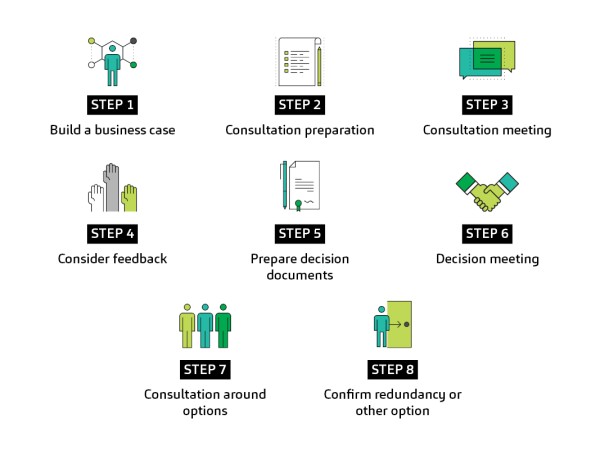Insolvencies – what can New Zealand business owners expect in 2026?
While no one is predicting a rapid recovery for the New Zealand economy, signs of confidence are inc...
Many businesses are facing unprecedented times and have been forced to consider if they can continue to operate in the same manner as before.
Time to read: 5 mins
With income and day to day operations heavily impacted, many businesses will be considering restructuring to suit the new demands and remain economically viable. In some cases this restructuring will result in redundancies, as the labour needs of the business are recalibrated.
However, it is important to note that an employer’s legal requirements when undertaking a restructure and/or a redundancy process during COVID-19, or during any of the alert levels, does not change. Indeed, the employer’s obligations to act in good faith is more important than ever and they must not act in any way that might undermine their employment agreement or employment relationship with employees
Restructuring is not just about making people redundant; it could be about modifying work practices to enhance efficiency and effectiveness and ensures business continuity. It involves looking at other alternatives, including saving money on other overheads, or finding a new way of working (e.g. working from home), or a new process.
Before deciding to make people redundant, employers need to consider if there are any alternatives first, such as:
If redundancy is the only viable option, it is crucial that employers get the process right. They should understand that there is a clear process to follow. First and foremost is to review the parameters outlined in each employee's employment agreement; making sure to follow any processes which might be contained within the agreement to ensure that the employer does not inadvertently breach them.
In order for a redundancy to be justified, an employer must demonstrate that the dismissal was what a fair and reasonable employer would have done given all the circumstances. Be mindful of the fact that if the redundancy decision is challenged, the Employment Authority will look both at the rationale behind the commercial decision and whether the employer got the process right.
The following outlines the key process for employers.

Employers need to consider what they are trying to achieve (e.g. reducing costs); how they will achieve it (i.e. reducing headcount); and more importantly, how the employer’s proposal is going to achieve that result (i.e. forecasted figures showing the changes and improved cash flow).
Employers need to prepare documentation setting out the proposal to be presented to employees. The proposal should outline the following:
Look to prepare an invitation to employees for the consultation meeting, ensuring that employees are offered the right to representation or a support person. At the meeting, employers should have prepared a script discussing the proposals, talk through the timeline and next steps, give out a copy of the documentation to staff and advise on what support is available.
Obtaining feedback from those directly impacted is an important part of consultation, even if it is simply that there is “no feedback to give”. It is paramount that Employers remain open to other suggestions, alternatives and clarify any questions.
Employers must acknowledge when the consultation period has ended. Following this, it is recommended that a response to the feedback received is given and documentation setting out the reasons for the final decision is drafted.
Employers must supply an invitation to employees for the decision meeting, again reminding them of their right to bring representation or a support person. Consideration should be given to the order and timing of communication e.g. worst affected first, and all in one day. Once again, it can be useful to prepare a script to follow explaining the rationale for the decision.
If the decision is to disestablish a position; redeployment should be considered as an alternative. If no other options are available, then redundancy will be the outcome.
If a number of people are employed in a role that is being disestablished, employers must run a selection process based on an objective-based matrix. The employer will confirm the person who is to remain in that position and consider redeployment for others. If there are no other options, confirmation of redundancy to the unsuccessful employees will need to be given. Feedback on the selection criteria can be useful at the consultation stage.
Employers must confirm the final decision in writing. If the decision is that of redundancy, outline any redundancy entitlements, including the last date of employment, in the letter. Consider whether the employee is to work out all or some of their notice period. If feasible, outplacement support can also be offered and this can come in the form of EAP support, career coaching, CV preparation or job search and interview coaching.
If an alternative to redundancy becomes available during the notice period, employers must give this serious consideration which may lead to the redundancy being withdrawn.
If you have any questions about the restructure process or need assistance with developing your new structure and the proposal documentation, or provision of outplacement support, then feel free to get in touch with your local Baker Tilly team.
Our website uses cookies to help understand and improve your experience. Please let us know if that’s okay by you.
Cookies help us understand how you use our website, so we can serve up the right information here and in our other marketing.